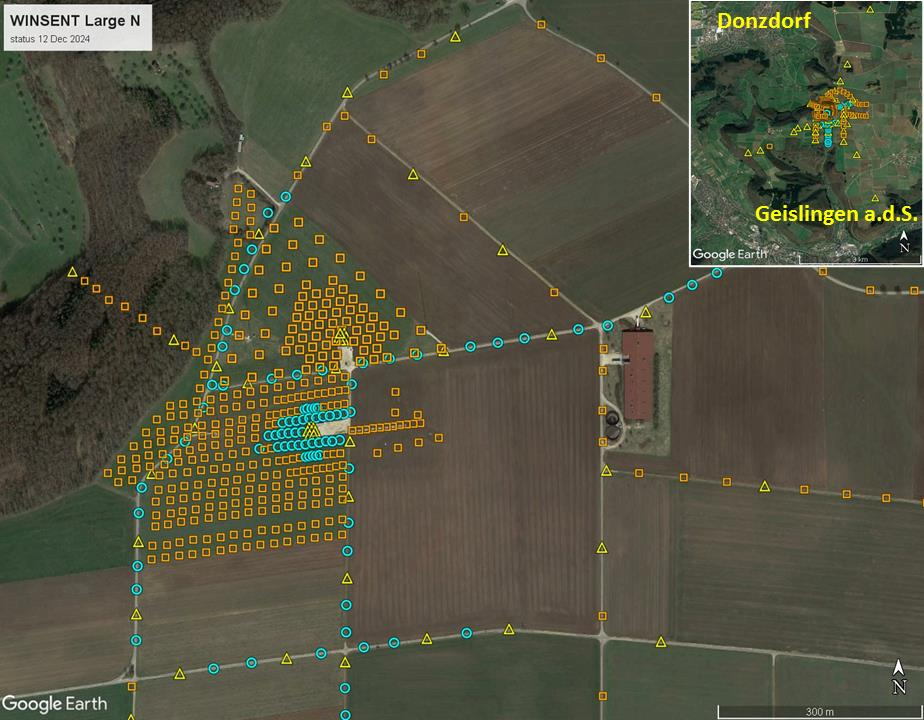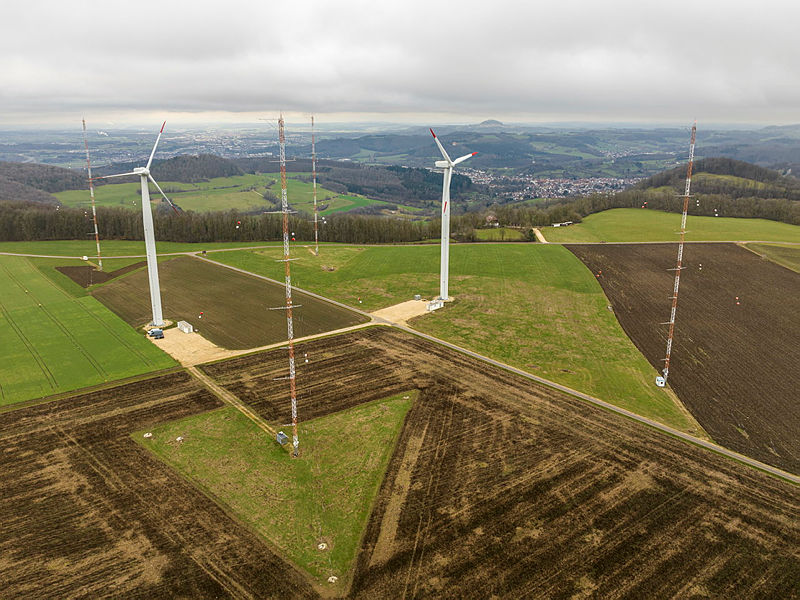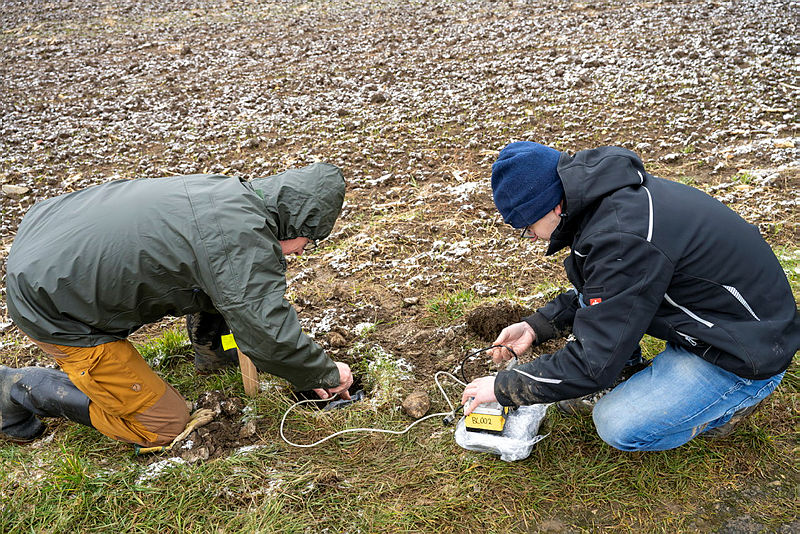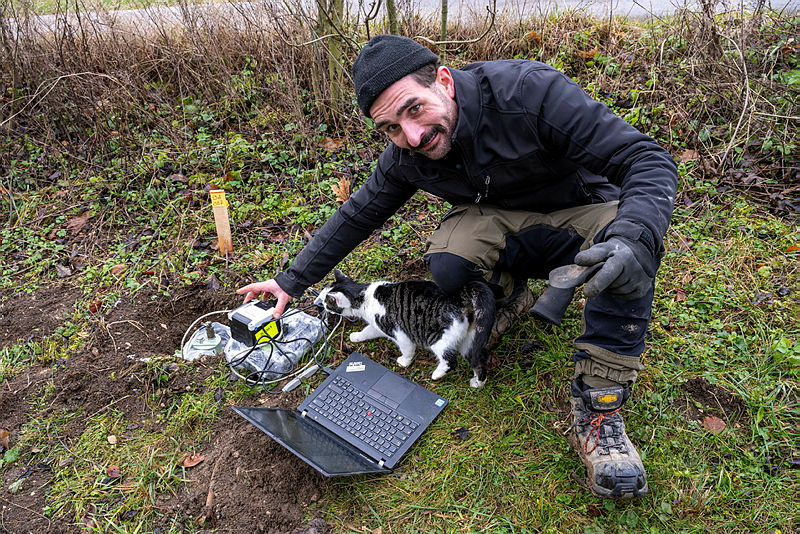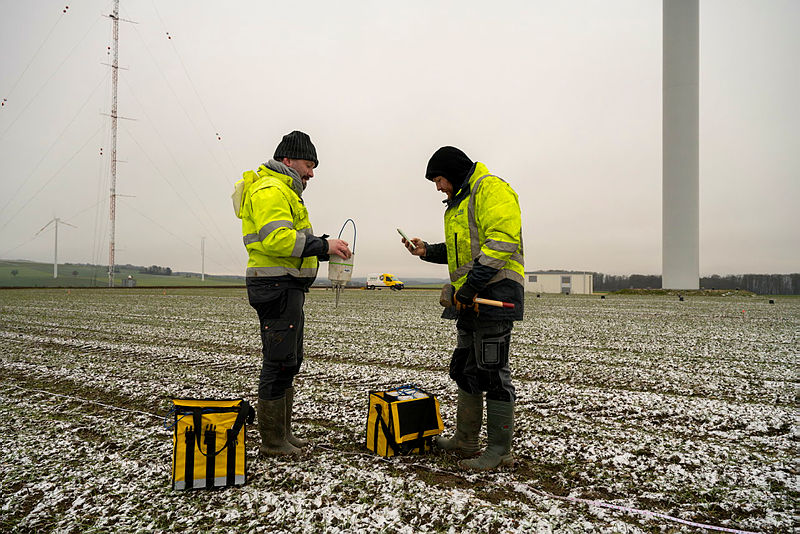WINSENT Large-N Experiment
Within the green energy deal of the German Federal Government, the installation of new and re-powering of existing wind turbines is seen as a high priority to reach the goal of 2% aerial coverage by 2032.
This development is visible across the country, but also in the seismic data of the nationwide and federal states seismometer networks. Characteristic frequencies originating at wind turbines affect the seismic records and may hide weaker signals from physically interesting sources within and outside of the Earth. To mitigate these effects, the seismological community initiated different projects to understand the induced seismic signals and relate them to mechanical processes at the wind turbines.
While the motion of a wind turbine is now relatively well understood (motion of the tower and influence of blade passing), predicting the amplitude of the radiated wind field is getting increasingly complex with large wind parks potentially consisting of various turbine types. Modeling of induced noise at the seismometer is a complex multi-parameter problem that not only depends on the wind turbines and meteorological conditions but also on the near surface structure between the turbines and seismometer. Two open question are the motion of the foundation of a wind turbine acting as the noise source and also the coupling of the tower’s foundation with the ground and resulting near-field effects.
Shedding light into this question, a German-Dutch cooperation between KIT (lead), LMU Munich and KNMI installed a Large-N seismic network of over 560 seismometers at the WINSENT test site on the Swabian Alb. The site features two fully instrumented research wind turbines, which are part of the WindForS consortium (partnered with KIT). The measurement covered 6 weeks around the Christmas and New Years season, a time season prone to be affected by strong winds and low anthropogenic activity. The sensors were strategically positioned densely around the turbines, along different outgoing profiles and within manholes inside the turbine’s foundations.
Technical specifications of both turbines are well known and the permanent measurement of meteorological parameters (i.e., windspeed, wind direction etc.) offer a database to understand the temporal behaviour of the two towers. Furthermore, during the measurement, controlled de/activation of the turbines gave an insight into the induced signals of different operational states of the towers. This unprecedented dataset offers a high-resolution insight into near-field effects caused by the coupling of the fundament with the soil. Data analysis is currently underway at KIT.
This project was initiated within the BMBF Verbundprojekt 05A2024 of the ET framework to characterize wind turbine induced noise on the underground facilities. Involved partners are:
- Geophysical Institute (GPI) at the Karlsruhe Institut für Technologie (KIT): 100 short-period and 12 broadband
- Koninklijk Nederlands Meteorologisch Instituut (KNMI) and Liège University: 395 3-D SmartSolo
- LMU Munich: 3 rotational sensors
A subset of seismic sensors where provide by the Geophysical Instrument Pool at Geoforschungszentrum Potsdam (GFZ): 50 broadband seismometer
